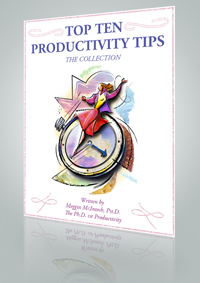How to Write With a Knife by Michelle Russell
 Think it’s impossible to write with a knife?
Think it’s impossible to write with a knife?
Not at all. You might even say it’s essential. Well, to be more precise, no one actually writes with a knife. But good writers do edit with one. For them, writing involves two separate but closely intertwined mindsets: crafting their message and then cutting away everything that’s not their message. Yesterday, Jon Morrow talked about why you need to tighten up your writing. Today we’re going to talk about how.
Write for yourself, edit for your readers.
Really good writing always begins with the desire for self-expression. Let your mind and heart say what they want without restriction. You’re rough-hewing the shape of your thoughts. But once the broad contours have emerged in your first draft, you take your knife and carve off all the extra bits. Sculpt your article until the important details are clear, not hidden by chunks of irrelevant or uninteresting verbiage. It isn’t easy. As writers, we all have a tendency to fall in love with our words. So here are seven tips to help you cut to the chase.
-
Find the spine of your content and stick to it. A blog post is a focused piece of writing — it shouldn’t aim to address more than one tightly focused topic. Yes, that story about your telecommuting co-worker and her embarrassing webcam moment is pretty darn funny. But if you can’t make it 100% relevant to the point you’re trying to make, don’t use it. You can’t make your audience chuckle if they’ve clicked away.
-
Cut the first paragraph. This advice is often given to novelists, who are counseled to write a rough draft and then ditch their entire first chapter (ouch!). The reason? We often need to crank out a paragraph or two before we truly get a grip on the piece and where it’s going. Those first words are really just preparation for the good stuff. Try cutting the first paragraph or two from your post and see what happens. You may find a much more powerful opening.
-
Don’t over-spice your words. Many writers liberally pepper their sentences with adjectives and adverbs, and it ends up like over-spiced chili. They think this intensifies their writing, but really, it just numbs the reader’s palate. (Side note: Take a look at the paragraph above this one. Did you catch where it was over-spiced? I didn’t need the word “liberally.” The verb “pepper” and the simile “like over-spiced chili” were more than enough to get the idea across.) Remember that just like chili, a little seasoning will add yummy zing to your writing. Too much will make it unpalatable.
-
Watch out for “creep-in” words. These are the unnecessary words you use without even realizing it. Two of mine are “just” and “actually.” And yes, it’s actually true that when I read through my first draft of this post, I just went back in and removed several of each. Getting rid of creep-ins is a painless way to cut the fat out of your copy, and no one will ever miss them. What are your own personal creep-ins? If you don’t know, ask a professional editor to clean up one of your posts and pay attention to what they take out.
-
Cut exaggerations. Were you so angry that you “literally had smoke coming out of your ears?” Was the sunset “heart-stoppingly beautiful?” No, not really. Your readers will see these phrases for what they truly are: lazy exaggerations. Cut them from your writing, and use more precise words (see #6) instead.
-
Find a more precise word. Sometimes, we use a lot of weak words when one or two of the right words will do much better. If you’re publishing a review of your local taquería and you write that “their burritos are really very good,” reach a little deeper into your vocabulary. Are they authentic? Zesty? Flavorful? Picking the right word won’t just make your writing shorter. It’ll give your readers deeper insight into what you mean.
-
Reuse the leftovers. Ever notice how the best cooks don’t seem to waste anything? Professional writers work the same way. When they edit, they don’t delete their writing forever. They put it aside and often use it as inspiration for something else. I’d recommend starting a “Leftovers” document where you paste in your cuts. Whenever you’re searching for an idea, you can poke through it, and something will probably grab you. Use it to start a new post.
-
Experiment with shorter paragraphs. The times, they are a’changin.’ The grammar and usage rules you were taught in grade school are still good to know and use under some circumstances, but much of our day-to-day communication has become quite informal. Short is punchy. Try throwing in some short paragraphs–including single-sentence ones, or even sentence fragments. Like this one. Don’t be so short and choppy that your paragraphs sound like they’re gasping for air, but do recognize that when you strip out excess verbiage, the words that remain will have even greater impact. So shorten things up.
-
Don’t be passive. Most of the time we (subject) write (verb) sentences (object) in the active voice–that’s when the subject is performing the action the verb describes. However, sometimes sentences (subject) are written (verb) by people (object) in which the sentence’s subject is what is being acted upon. This is the passive voice. And as you see, it can feel a little . . . meh. Sometimes the passive voice can be used effectively (such as right there), but it’s better to go with active verbs most of the time. They’re stronger and more vivid. Compare this:
Every day, the front door was unlocked and the “OPEN” sign placed in the window by Julie when she arrived at the shop.
with this:
Every day, Julie unlocked the front door and placed the “OPEN” sign in the window when she arrived at the shop.
There’s nothing grammatically wrong with the first sentence, but the second feels clearer and more interesting. Use strong, precise verbs wherever you can. This is one of the best ways to pare down and sharpen up a piece of writing.
-
Read your piece to a child. Okay, this one doesn’t apply if you’re writing an article for a trade journal in the field of nuclear physics. In general, though, use simple words that a twelve-year-old would know, and string them together simply and clearly. You may think this “dumbs down” your writing, but your audience will genuinely appreciate the time you take to clarify your thoughts. Remember–you want your readers to effortlessly follow your river of ideas. Don’t block the flow with sandbars of confusing words and phrases that they’ll have to slow down to navigate around. One good way to test whether your piece passes this “flow” test is to read it out loud to a child. Do they grin back at you and say they get it all? You’re good to go. Do they stop you and ask for explanations? Do they appear confused? Those are the places you’ll want to take another look at and simplify.
You can do it!
I know it’s hard to cut words. We’re all afraid of running out of something to say. But in my experience, that never happens. Trust me when I say that there will always be more words where those came from, and you will find them when you need them. Just remember to carry your knife with you.
You’ll need it.
© Michelle Russell
About the Author: Michelle Russell blogs about the perils of perfectionism — with and without knives — at Practice Makes Imperfect. You can also follow her on Twitter, where the 140-character limit forces her to keep her knife sharp whether she wants to or not.
 If you liked these tips and would like over 560 practical, immediately-implementable tips to read, print, and/or post as reminders, then you will want the Top Ten Productivity Tips – The Collection, available to access and download right away! Inside this full-color, 108-page productivity manual, you’ll find several hundred tips covering topics such as meetings, workspace organization, planning your day, effective delegation, and how to keep your mind focused on your work. With these clever tips in hand, you’ll be more peacefully and predictably productive than you’ve ever been.
If you liked these tips and would like over 560 practical, immediately-implementable tips to read, print, and/or post as reminders, then you will want the Top Ten Productivity Tips – The Collection, available to access and download right away! Inside this full-color, 108-page productivity manual, you’ll find several hundred tips covering topics such as meetings, workspace organization, planning your day, effective delegation, and how to keep your mind focused on your work. With these clever tips in hand, you’ll be more peacefully and predictably productive than you’ve ever been.




